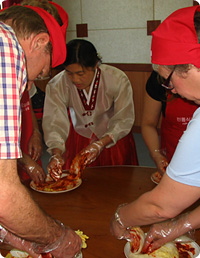CULTURAL
Temple Stay (A) / 2 days
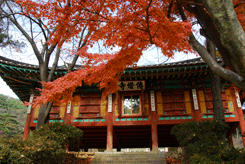
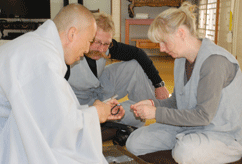
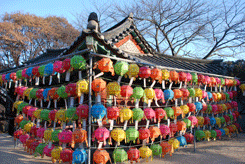
Tour Highlights
- Ganghwa History Museum
- Ganghwa Dolmen
- Temple Stay
Day 1 Seoul - Ganghwado (D) 80km
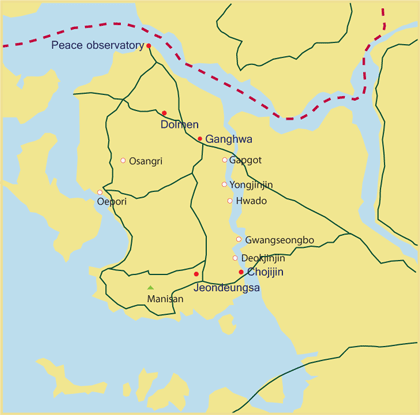 *The temple stay is subject to operate with minimum 10 persons.
*The temple stay is subject to operate with minimum 10 persons.
This morning you will explore Ganghwado, a fascinating island that is often called a microcosm of Korean history. But, due to its strategic location, Ganghwado has historically been one of the first targets of many foreign attacks particularly in the late 19th century when Korea unsuccessfully sought to maintain its status as a "Hermit Kingdom".
Ganghwa History Museum provides glimpse into the historical records of the entire spectrum of Korean existence, from the mythical foundation of Korea to the opening port to the outside World marked by Ganghwado Treaty signed in February 1876. On the nearby ground sits a huge Ganghwa Jiseokmyo Dolmen. This 53-ton capstone of 6.4 meters long, 5.2 meters wide and 1 meter thick rests on two sturdy supporting prop stones. This prehistoric dolmen including many others in Gochang and Hwasun has been registered by UNESCO in December 2002 as a World Heritage for their archaeological value.
Next up is Peace Observatory, perhaps the most striking part of the tour. The location of the observatory is astounding as the separation line is fascinated by a river and lots of green mountains on both sides. Standing at the nearest point of only 2.3 kilometers away from North Korea, learn about complicated modern Korean history as you take a glimpse at the living environment of North Koreans. A visit to the observatory ushers in the common hope for the Korean unification.
There are many temples in Korea, but the opportunity to observe and experience the ascetic Buddhist life in a temple does not come easily to outsider visitors. Some of the temples in Korea open their doors to foreign visitors for a short sojourn to give visitors the opportunity to see how monks practice their daily discipline from early morning prayers to evening rites. The temples are places where Buddha dwells and where the disciples of Buddha, or monks, practice asceticism. It is also a place where believers learn Buddhist teachings and put them into practice. Visitors will get to study and experience the Korean tradition and culture, all at the same time enjoying the nature.
Jeondeungsa is an active Buddhist temple dating back to 381 providing a glimpse into Buddhist culture. The temple came into prominence during the late Goryeo period (918-1392) when King Gojong commissioned the famous Tripitaka Koreana wood blocks to be carved there which are now preserved in Haeinsa temple. The main worship hall is dedicated to Sakyamuni Buddha. The Buddha is flanked on the left by Manjusri, the Bodhisattva of Perfect Wisdom, and on the right by Samantabhadra, the Bodhisattva of Perfect Compassionate Action. As you approach the hall, look carefully way up in the eaves at the corners of the roof, and there you can just see tiny human figures, one at each corner. One version says that the forsaken carpenter carved his two-timing girl up in the rafters, eternally bearing the burden of her deceitfulness. See dharma bell dating back to 1097, the only Chinese bell designated a Korean treasure.
Temple stay program may slightly vary due to season and conditions of the individual temple situation but it basically includes Evening Ceremony-Yebu during which you will learn how the monks pay respect to the Buddha as you listen to their rhythmic chanting. You will experience silent introspective meditation interspersed by gentle advice from the monks, and enjoy a traditional Buddhist prayer bead making. Beads are used to count to 108, and during the temple stay bowing ceremony led by monk, you get to string your own beads.
One by one, bow by bow. Other programs may include Tea Ceremony, Rubbings, Buddhist Martial Arts, and Lotus Lantern Making, etc. - a distinctive experience that is sure to create special memories.
Upon arrival at the temple and having your rooms assigned,
you will have a temple stay orientation session during which desirable appearance, behavior in the temple and general manners in the Buddha Hall are briefed, and Baru Gongyang Practice followed by
temple tour. Then you will experience temple meal perhaps first time in your life. The food doesn't have spices and is neither hot nor salty. The temple way of eating is available to laymen though, you will simply have your dinner in the temple dining hall. It is another mysterious experience for the commoners to try.
Following the dinner, Four Buddhist Instrument
Ceremony is performed. The bell, which almost all Korean temples are equipped with, is one of the four Dharma instruments together with Dharma drum, wooden fish, and cloud-shaped gong. Hearing it reverberating through the universe, you will reflect upon the profound symbolism of the instruments. It is a great vow to save, or enlighten the creatures in the universe including those on land, in the sea, in the air and in hell.
After this ceremony, you will participate Evening Ceremony, Zen meditation and experience Prayer Bead Making.
All lights are turned off at 21:00. Apart from the moan of the wind, a quiet stillness prevails. The warm Ondol floors (heated from below) of the temple are clean and large enough to accommodate a small group of visitors. Rooms are sparsely furnished with mattress, quilt and pillow. It is advisable to bring your towel. However, the slight inconvenience is more than compensated by the tranquil and introspective atmosphere of the temple.
Day 2 Ganghwado - Seoul (B) 60km
The day in the temple begins at 04:00 when the sound of the moktak awakens the residents. Every monk and people in the temple will gather at the Main Buddha Hall and perform Pre-dawn Ceremony. This magnificent Ceremony will clear all dust from your minds and all stray thoughts from your heads. During the ceremony, you will offer 108 prostrations to show respect for Buddha as well as align your body in a proper way to have a release and cleanse your mind of earthly attachments, passions and delusion that disturb and pollute your body and mind.
You will this morning experience
Baru Gongyang, a unique and special dietary arrangement of Buddhism. It is a monastic ritual of eating that requires complete silence and no wasting of food. After breakfast, Walking Meditation, Tea Time with monk, and Ulyeok or Communal Work complete your temple program.
Normally Ulyeok agenda includes farming or upkeep. However, if there is no particular agenda, one normally does ordinary sweeping of court yards or cleaning the buildings. This is not just physical work, but should be seen as another way of practicing, developing patience and discipline. While not as intensive as Zen meditation, the tedium and mundanity of basic work provides a strong foundation for the monks practice. Also, after meditation, sutras reading, and worship, monks find Ulyeok relaxing. Washing gowns you wore during the stay, sweeping autumn leaves from the courtyard or snow from the pathways provides an opportunity to relate quietly with the nature and with each other in the community of work. With all these benefits, you should join Ulyeok with pleasure. It is a good way to express gratitude to your hosts. Practitioners also find themselves refreshed through Ulyeok.





